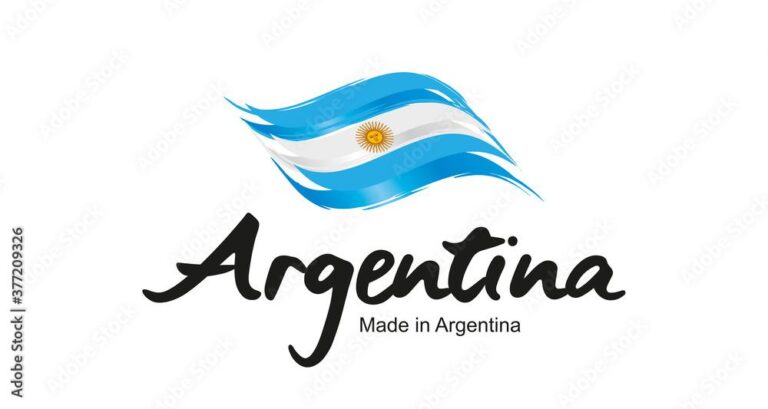Buenos Aires – The recent closure of several factories bearing the “Made in Argentina” label has intensified the economic challenges facing President Javier Milei’s administration, Reuters reports. The factory shutdowns, spanning multiple industries, underscore the persistent difficulties in reviving domestic manufacturing amid inflationary pressures and investor uncertainty. As the government seeks to implement pro-market reforms, the wave of plant closures poses a formidable obstacle to achieving sustainable economic growth and job creation in the country.
Economic Impact of Factory Closures on Argentina’s Manufacturing Sector
The closure of numerous manufacturing plants across Argentina has sent ripples throughout the nation’s economy, undermining industrial productivity and intensifying unemployment rates. Key sectors such as automotive, textiles, and metalworks have been hit hard, leading to a contraction in domestic output and a surge in imported goods to meet local demand. This decline inflicts a double blow: not only are jobs lost, but the traditional “Made in Argentina” brand risks eroding, weakening long-term industrial competitiveness on both regional and global stages.
Economic repercussions include:
- Rising unemployment, particularly among semi-skilled laborers.
- Reduced contribution to Argentina’s GDP from manufacturing-down by an estimated 3.5% in the last quarter.
- Increased dependency on imported raw materials and finished products.
- Decreased foreign investment interest amid rising operational risks.
| Sector | Factory Closures (2023) | Job Losses | Impact on GDP (%) |
|---|---|---|---|
| Automotive | 15 | 8,500 | 1.2 |
| Textiles | 22 | 4,300 | 0.8 |
| Metalworks | 10 | 3,000 | 0.5 |
Political Challenges Facing Milei Amid Rising Unemployment
As the unemployment rate in Argentina continues to escalate, President Javier Milei faces mounting pressure from multiple fronts. The recent wave of factory closures, particularly within the “Made in Argentina” sector, has not only amplified economic strains but also intensified public discontent. Industrial shutdowns highlight persistent structural weaknesses, including rising production costs, inadequate investment, and supply chain disruptions that local businesses struggle to overcome.
- Job losses: Thousands of workers displaced from shuttered factories risk prolonging economic stagnation.
- Social unrest: Frustration over shrinking job opportunities fuels protests and political opposition.
- Government response: Calls for urgent policy shifts clash with Milei’s fiscal austerity agenda.
| Sector | Factory Closures (2024 Q1) | Job Losses |
|---|---|---|
| Textiles | 12 | 1,200 |
| Automotive | 9 | 950 |
| Electronics | 7 | 670 |
Political analysts warn that without decisive intervention, the cascading effects of these economic hurdles could destabilize Milei’s administration. To counteract this, some factions urge the implementation of targeted stimulus packages to revive local manufacturing and safeguard employment. Yet, balancing immediate relief with Milei’s market-oriented reforms remains a delicate challenge that threatens to define his tenure amid rising unemployment and social discord.
Policy Recommendations to Revive Domestic Production and Stabilize the Economy
To counteract the ongoing decline of Argentina’s manufacturing sector, policymakers must prioritize a multi-faceted approach that incentivizes domestic production while ensuring macroeconomic stability. Targeted subsidies for key industries, including automotive, textiles, and agribusiness, can catalyze investment and job creation. Additionally, reforming the tax code to alleviate burdens on local manufacturers and implementing protective tariffs on select imported goods will help shield homegrown enterprises from unfair international competition. Strengthening access to affordable credit through public-private partnerships is also crucial to enable factory upgrades and innovation, fostering competitiveness in global markets.
Equally important is the creation of a stable economic environment that encourages long-term planning and growth. Transparent fiscal policies, complemented by a strict commitment to controlling inflation, would restore business and consumer confidence. The government should also establish a comprehensive labor reform package aimed at balancing workers’ protections with flexibility to adapt to modern manufacturing demands. The table below outlines some proposed policy measures alongside their expected impact on domestic production and economic resilience:
| Policy Measure | Target Sector | Expected Impact |
|---|---|---|
| Subsidies for Industrial Innovation | Automotive & Machinery | Boost in productivity and exports |
| Tax Reductions for SMEs | Textiles & Food Processing | Increased domestic investment |
| Credit Access Expansion | All Manufacturing | Modernization of factories |
| Labor Law Flexibility | General Manufacturing | Improved competitiveness and hiring |
To Wrap It Up
As Argentina grapples with the closure of factories that once bore the “Made in Argentina” label, the economic landscape presents mounting obstacles for President Javier Milei. The shuttering of these industrial sites not only underscores deep-seated structural issues but also signals a challenging road ahead for policymakers aiming to revive domestic manufacturing and stabilize the economy. Amid rising unemployment and social unrest, the government’s ability to address these pressing concerns will be critical in shaping Argentina’s economic trajectory in the coming months.




